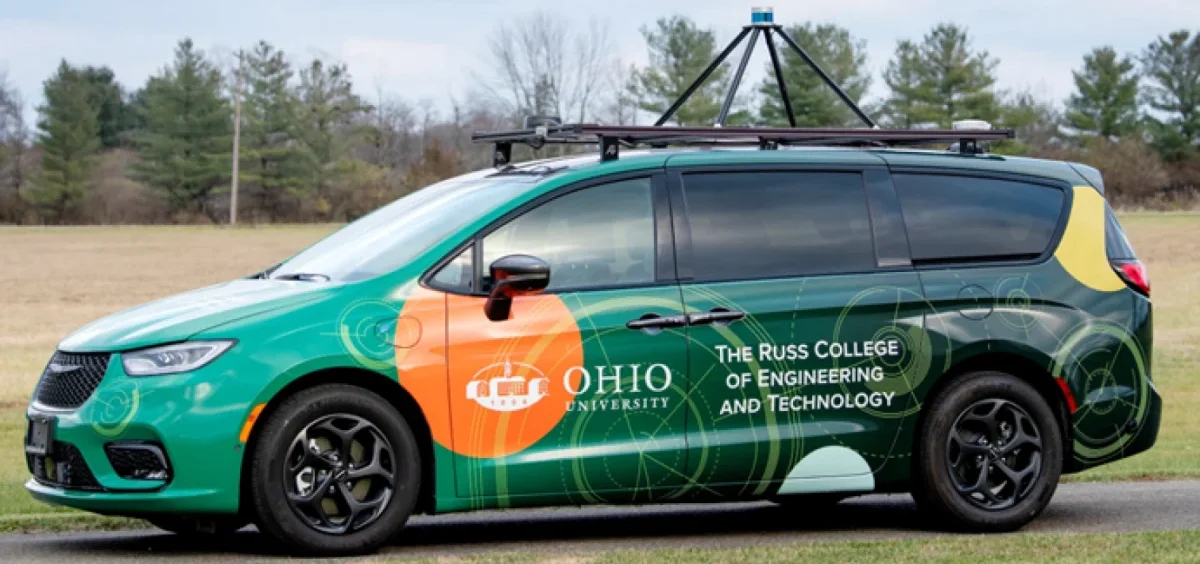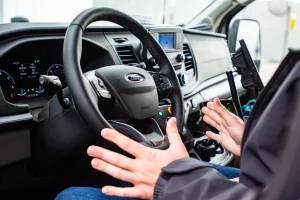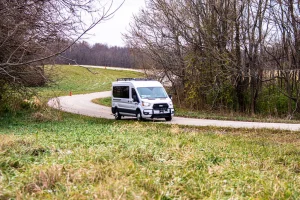News

Self-driving cars are on their way to southeast Ohio
By: Erin Gottsacker | The Ohio Newsroom
Posted on:
ATHENS, Ohio (The Ohio Newsroom) — Self-driving cars already roam the streets of cities like San Francisco and Austin, Texas. But how do they fare on the hilly terrain of Ohio’s southeast?
A team of researchers from Ohio University endeavored to find out. They just wrapped up a four-year-long collaborative project with DriveOhio and the state’s Department of Transportation testing autonomous vehicles on a series of routes through Athens and Vinton counties.
“They actually did remarkably well,” said Jay Wilhelm, an associate professor of mechanical engineering who led the study.
He sat in the driver’s seat as the autonomous vehicles maneuvered through traffic and around curves. Riding there was a little like driving with a teenager, Wilhelm said: they were heavy on the accelerator and just as heavy on the brake.
“I did a lot of what I call safety driving,” he said. “My hands [were] hovering above the wheel ready to take over.”
The cars drove on a series of selected routes: through the campus of Ohio University, around a rural airport and down a state route through the Appalachian hills.
Sometimes, the vehicles nailed the drive.
“To me, the easiest one was the route out in Vinton County,” Wilhelm said. “It was by the airport. We had consistent cell phone connectivity, which helps us with our GPS location. There was hardly any traffic. It was all right turns. And it was usually just a very good time. I think there were several times we drove it, and we didn’t need to do anything. It just worked.”
But other times, the self-driving cars needed a human hand.
The top challenges
The hardest route for the self-driving cars to navigate was through uptown Athens.
“We faced challenges from the cars parked a little far from the curb,” Wilhelm said. “Even for us humans, that would cause problems.”
But coupled with students scurrying across busy streets to class, the cars struggled to perform.

The self-driving cars also struggled with southeast Ohio’s spotty cell service.
“GPS is only accurate to a couple of feet,” Wilhelm said. “And to really do this, we need half-an-inch accuracy. So we rely on corrections to come over the cell network to get that accuracy.”
But cell signal in the region’s hilly terrain isn’t consistent.
“And so we would notice the thing start to drift a little bit, either center or out toward the guardrail, and you got to take over,” Wilhelm said.
He believes that’s the biggest barrier keeping autonomous vehicles off the region’s roads, but there were other challenges too.
“About 20% of the time when we turned it on, it just didn’t work,” he said.
The future of self-driving cars in Ohio
Despite that, Wilhelm believes autonomous vehicles will eventually make their way to southeast Ohio.
“If it was up to me, it would be tomorrow,” he said.

“Athens County is the poorest county in Ohio,” he said. “There are a lot of health problems. There’s an aging population. The medical facilities got a lot better in Athens, but there’s really nothing in the surrounding counties. So a lot of people need to travel from far away to get to their medical appointments.
“And it’s a similar story with food. A lot of these surrounding counties are food deserts. If you’re elderly or disabled, it’s going to be really difficult for you to get to where you need to go. You need to rely on somebody to move you, whether that’s a family member or friend.”
Autonomous vehicles could be a key to freedom and independence, Wilhelm said, but the technology will only be useful if people are willing to try it out. So as part of this study, Wilhelm and his co-collaborators also visited retirement homes and community centers to gauge people’s perceptions of the new technology.
“Overwhelmingly, at the introduction of this, most people are hesitant,” Wilhelm said.
But after seeing an autonomous vehicle, many changed their opinions.
“This isn’t anything exotic. This isn’t anything from a science fiction movie. It’s just a normal vehicle,” Wilhelm said.
Someday, it could be the norm on southeast Ohio’s streets. But for now, self-driving cars still have a ways to go.

